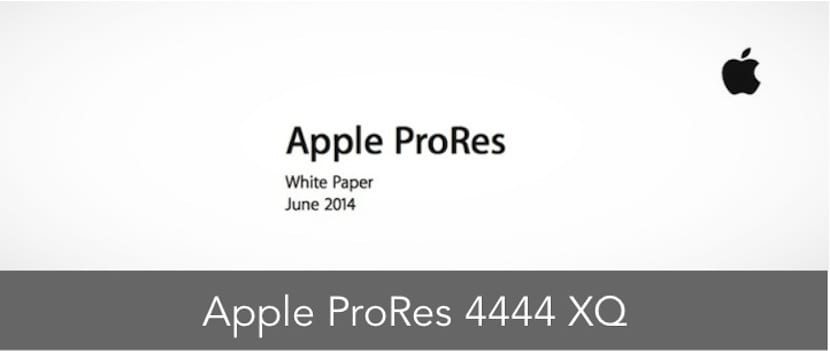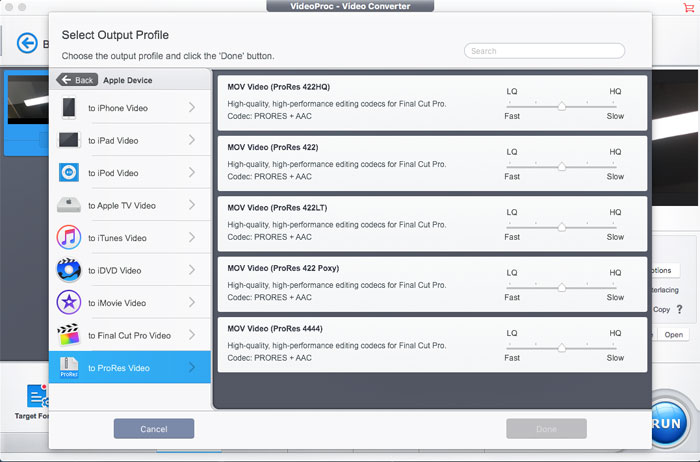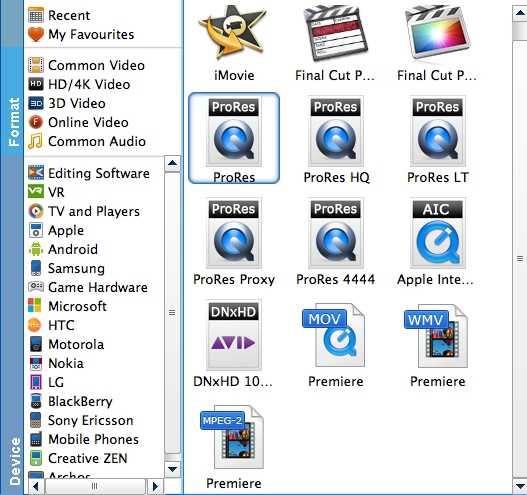
ProRes XQ (or ProRes 4444 XQ) was released in June 2014 as an expansion to the already very robust ProRes 4444. The new codec kept all the standard 4444 features post and VFX work have come to love (lossless 12 bit color and 16 bit with alpha), but has expanded the data rate to a staggering 396 MB/s at 1080p24 (vs 264 MB/s with 4444). Apple ProRes 4444 is a high-quality solution for storing and exchanging motion graphics and composites, with excellent multigeneration performance and a mathematically lossless alpha channel.
At the time of this writing, the members of the Apple ProRes family (in ascending order) are ProRes 422 Proxy, ProRes 422 LT, ProRes 422, ProRes 422 HQ, ProRes 4444, and ProRes 4444 XQ. 10 Important Things about ProRes You Should Know. Inception and Vendor; ProRes was first released in the year 2007 by Apple along with Final Cut Studio 2.
ProRes is one of the most popular video codecs in professional post-production. It enables fast editing of high quality footage while preserving high image quality. But which ProRes codec is right for you?
ProRes was first developed as a codec to be used in Final Cut Pro X. In recent years Apple started licensing it to selected companies for use in their applications. Now ProRes is supported in most of the popular editing applications such as Premiere Pro, Davinci Resolve and Final Cut Pro X. High-end cameras like RED and Arri support recording in ProRes internally as well. Alternatively you can also use an external recorder like the Atomos Shogun to record the incoming signal to a ProRes format.
Apple offers 6 different versions of its ProRes codec with all kinds of fancy names. What do they actually mean and which one is right for you?
The main difference between the versions are the data rate, bitrate and chroma subsampling. To understand the different versions better it is important to have a general understanding of these terms.
Chroma Subsampling
In the ProRes versions you find cryptic numbers such as 4:2:2 and 4:4:4. These numbers tell how Chroma Subsampling is used. Chroma Subsampling is a form of compression used to reduce the amount of data needed to store the signal.
Our eyes are less sensitive to variations in color than variation in luminance. Therefore frames are not stored in RGB, in which each letter stands for the intensity of red, green or blue. Frames are stored in YCbCr. Y stands for the luminance and Cb and Cr for the color.

It uses the full range of luminance information but compresses the color values. It throws away color information which our eyes hardly notice and retains the luminance information which our eyes are more sensitive too. However the loss of color information is a trade off between size and quality. This is especially noticeable in color grading. As a 4:4:4 signal has more color information to work with than a 4:2:0.
Apple Prores 4444 Xq Codec Mac Osx
Color Depth
The ProRes 4:4:4 and 4:2:2 versions have another key difference. The maximum amount of bits available to be used. The bit depth is the range of the colors the video is able to use to assign a color per pixel. An 8-bit camera can assign a value up to 256 to Red, Green and Blue. Until recently 8-bit was the standard for consumer grade cameras, but recent cameras like the GH5 support 10-bit. Going from 8-bit with 16,777,216 possible colors to 10-bit with 1,073,741,824 possible colors gives more headroom in post-production and a better dynamic range.
ProRes Family
So the ProRes Family is divided into 2 sub groups. 4:2:2 Chroma subsampling supporting 10 bit and 4:4:4 Chroma subsampling supporting 12-bit (16bit with the Alpha Channel).
The HQ in the versions stands for a higher PSNR value leading to greater quality headroom. This increased headroom means that a frame sequence can be decoded and re-encoded over multiple generations and still look visually identical to the original (it won’t look better). So if you have to color grade or do VFX work on your shots while re-exporting the footage. Choosing a HQ version of ProRes will retain the quality better over multiple generations.
Your choice for the right ProRes version for you will depend on two things. The balance between the quality you need and the amount of storage.

ProRes 4444(XQ)
Master and intermediate coloring files. If you want to retain as much information as possible and are planning to do heavy color and effects work on the footage. Better file size than uncompressed but expect humongous files. Due to the 12 bit and no Chroma subsampling the best choice for quality. It supports alpha channels and preserves even the little details in HDR content generated with high quality cameras. The codec supports up to 16bits per image channel (without alpha 12bits per channel).
Use when: Post production with high end color grading and you don’t want to lose any detail and be able to re-render it multiple times without detail loss. Significant file size.

This is the codec we mostly use for high quality master files. It preserves 16bits per RGBA channel.
The codec features mastering quality in 4:4:4:4 RGBA color with an extremely high quality. It is preserving the image quality from nearly every footage we ever worked with. In Contrast to 4444 XQ the target data rate 1180Mb/s with our 4K 25fps footage.
Apple ProRes 422 HQ
This is the third highest data rate version of ProRes. It preserves the visual quality as close as ProRes 4444 but for 4:2:2 image sources. This offers visually lossless preservation of the highest quality footage. This codec is widespread around the camera and video production industry. The codec is a 10-bit pixel depth codec. It retains visually lossless through many decodes and re-encodes.
Use for: Client delivery and final exports for archival
In total this keeps the quality of the footage compared to the file size in a healthy relationship so that we are still able to send the final exports over the internet to our clients. Use when source footage is 422 and you want to use it as a master file.

Apple ProRes 422
This is like 422 HQ but with 66% of the target data rate and file size. The compression can become problematic on certain files. Use when: Good for exports with a reasonable file size. Looks good, but not the best if you have to re-render it and color grade it a bunch of times.
Apple ProRes 422 LT
This is our go-to codec when it comes to Proxies (later more). It provides all the 422 HQ features but is only at a target data rate of 365Mb/s in our 4k 25fps footage. We use this for our on the road workflows that require a small storage capacity at a high quality retain. It is a great codec to edit with. Also it looks good enough to export without significant quality loss for a client review.
Apple ProRes 422 Proxy
The data rate of 422 Proxy is low which means the files are relatively small. Although the quality is also noticeably worse. Would not suggest it for editing. If you want a codec with good playback in editing application while being small this can do the job for you.
Use when: you are limited with storage for editing or have to send it over the internet. Use it when you need performance, like multicam editing . Otherwise go for the LT version.
Encoding ProRes
There are multiple solutions such as Adobe Media Encoder and Davinci Resolve. But they are time consuming to setup especially when working with large amount of files. Therefore we developed a small tool in-house that does the batch conversion of RED .R3D files to ProRes for us.
You can find more information about it on www.proxybeuker.com
Become a Pro in ProRes
Prores Codec
Now you know the differences of ProRes and the basics of chroma subsampling and bit-depth. You know what to use on your project and when! If you want a more in-depth explanation have a look at the whitepaper from Apple about ProRes.
